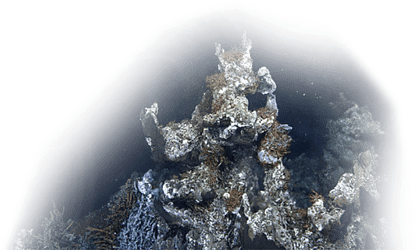UPDATE: Subsequent analysis since this story was published (28 November) shows that ONC sensors were able to provide 43 seconds of notification to Vancouver and Victoria before the ground-shaking at those locations. The cities are respectively 231 km and 235 kms from the epicentre, NW of Tofino on Vancouver Island.
The 43 second notification was also independently verified by a sensor located along the Canada Line SkyTrain in Richmond as an operator is participating in the testing of ONC’s earthquake early system.
Ocean Networks Canada (ONC) says analyses of the results from its seismic sensor network show that the system could have provided at least 35 seconds of warning to Victoria and Vancouver about the 4.8-magnitude earthquake that struck about 34 kilometres northwest of Tofino at 7:50pm PST Friday, 25 November, 2022 - showing the value of this soon-to-launch notification service.
ONC, a University of Victoria initiative, has been testing its network for several years, and is currently working with partners to launch an earthquake notification system so that operators of critical infrastructure can activate safety and emergency response measures and notify those in harm’s way.
ONC has installed and operates this network of real-time sensors in the deep ocean near the Cascadia Subduction Zone where the Juan de Fuca and North American tectonic plates converge off the west coast of Vancouver Island, in addition to a land-based seismic sensor network, to maximize earthquake-induced ground shaking warning time.
Kate Moran, ONC president and chief executive officer, says ONC’s seismic network detects the primary wave of an earthquake as it occurs in real-time, using a sophisticated algorithm to calculate the earthquake’s location and magnitude, and to determine when the ground-shaking waves that follow will travel through the earth reach other locations.
The amount of warning you get depends how close you are to the epicentre. In this earthquake, Tofino would have no warning due to its close proximity. But Victoria and Vancouver, which are about 230km from the epicentre, would receive at least 35 seconds warning before ground shaking arrives.
Moran says Friday’s earthquake demonstrates the value of earthquake early warning (EEW) systems, given the raft of safety and emergency measures that could be activated.
“Even a few seconds of warning enables protective and preventive measures, such as triggering trains to slow down, pausing surgeries, stopping bridge and tunnel traffic, and diverting arrivals for incoming air traffic,” she says. “Fortunately this Tofino earthquake was small enough to not cause damage, but having the same 35 seconds of warning in the case of a major shake would save lives and vital infrastructure.”
Earthquakes release energy that travels through the Earth as seismic waves. Primary or ‘P’ waves travel faster than secondary or ‘S’ waves, which are the cause of damaging ground shaking. ONC’s EEW system detects these first ‘P-waves’ and delivers alerts before the arrival of ground shaking caused by ‘S-waves’.
Moran says the P-waves from the Tofino earthquake were detected on 25 ONC sensors – five in the ocean, and 20 on land. As a result of the earthquake, the sensors continued to report shaking at their location for about 2 minutes.
ONC’s earthquake early warning seismic network picked up the P-waves from the November 25, 2022 4.8-magnitude earthquake, northwest of Tofino, on 25 sensors. This image shows data from four of the 25 sensors, one in the ocean and three on the land.
Time, in Coordinated Universal Time or UTC, is shown on the horizontal axis and the vertical axis shows the accelerated movement of the earth as the P-wave arrives.
Had authorities been connected to the system they would have got at least 35 seconds warning before the S-waves had traveled approximately 230 kilometres from the epicentre to reach BC Place in Vancouver and downtown Victoria.
This shows ONC’s seismic sensor network and the distance travelled before potentially damaging S-waves arrived in Vancouver and Victoria, following the 4.8 magnitude earthquake NW of Tofino (red star indicates the epicentre) on 25 November, 2022. The yellow pins indicate the locations of all the 25 sensors that detected a P-wave.
Note that some pins represent more than one closely-spaced sensor.
To maximize warning time, ONC hosts sensors as close to the Cascadia Subduction Zone as possible and minimizes delays in data processing, communication, and delivery of warnings. It also means up to 90 seconds of advance warning can be provided to future British Columbia notification recipients, depending on earthquake location.
Earthquake early warning is a collaboration among government, academia, industry, and communities including: Ocean Networks Canada, Natural Resources Canada, Emergency Management BC, the University of British Columbia, United States Geological Survey, and the Pacific Northwest Seismic Network.
Learn more about Ocean Networks Canada's earthquake early warning system.
